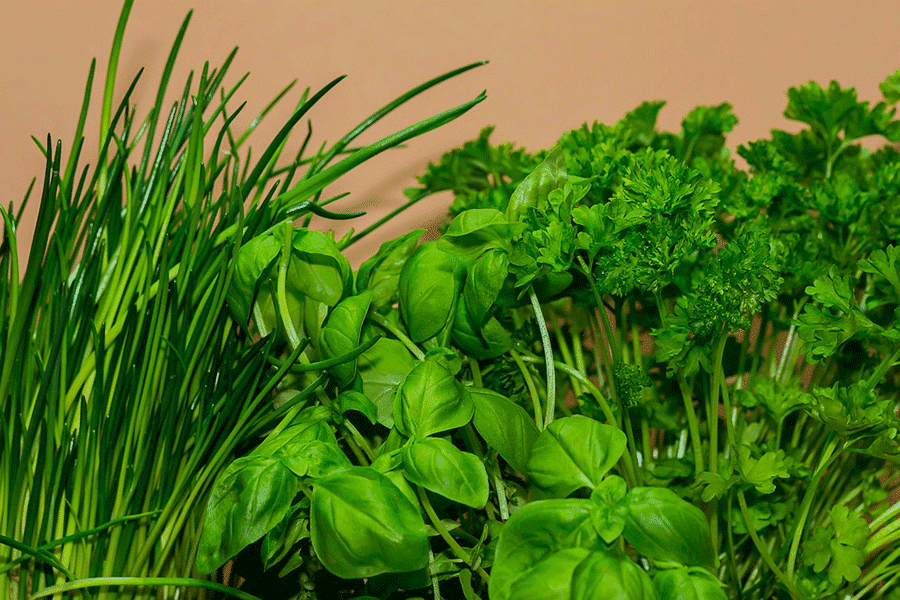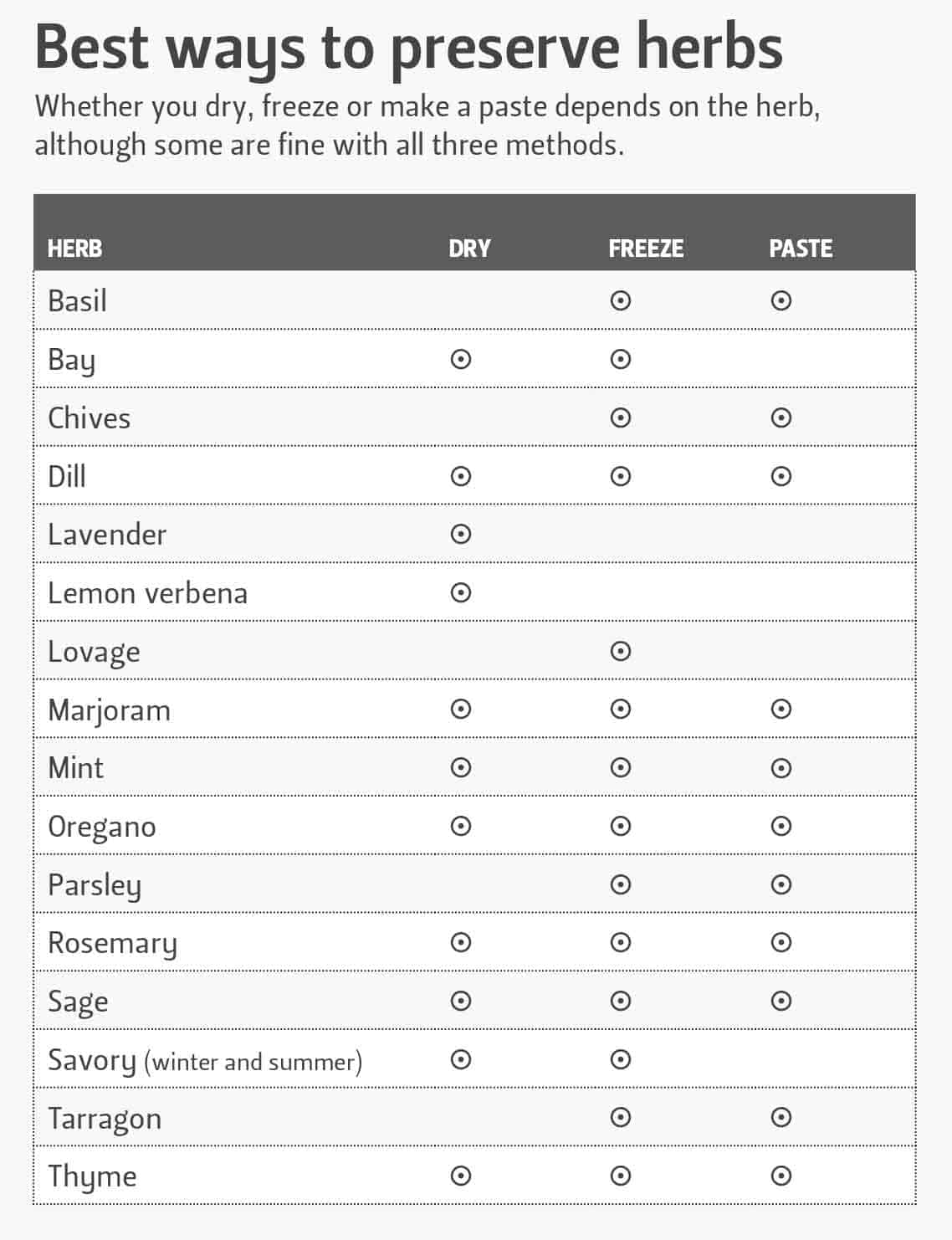
When the garden is dormant and the weather grim, using herbs you’ve harvested and preserved is a good way to keep the memory of summer alive. There are a number of ways to store herbs for the winter, and a few things to keep in mind as you do it.
Harvest herbs when they’re in their prime and on dry days. Ideally, pick them in the morning after the dew has dried but before the sun gets too strong. Alternatively, dusk works, too.
The three simplest means for preserving herbs are drying, freezing and making paste. Some herbs are better suited to one method more than another (see chart, below).
Drying
Herbs can be air-dried, oven-dried or slipped into a dehydrator. Air-drying is low-tech and easy. Choose a warm, dry area with good airflow (avoid basements, as they tend to be damp, and kitchens, as airborne grease will attach itself to the leaves). Strip leaves from small-stemmed plants, such as thyme, and dry them flat on a screen, stirring every day. Stiffer stemmed herbs like bay leaves can be loosely bundled and hung. To protect the herbs from dust and insects, slip them into paper bags ventilated with a few holes before hanging.
The trick to regular oven-drying is maintaining a low enough oven temperature (100°F/38°C) over a long period of time (two to six hours), and regularly watching and stirring the single layer of herbs. A food dehydrator is simpler. Set it between 95 and 115°F (35 and 46°C) and place the herbs in a single layer on the screens; they should dry in one to four hours. While herbs can be microwave-dried on paper towels for one to three minutes on medium power, microwaving depletes oil content, and often flavour, so it’s recommended as a last resort.
Drying times vary depending on the moisture in the air as well as the moisture content and thickness of the herbs themselves. As a rule, herbs should be “cornflake” crisp when dried, and still green. If they’ve turned brown, they dried too quickly or became too hot, and precious flavour has been lost.
Freezing
Soft-leaved herbs like tarragon, cilantro and lovage freeze well. Wash the herbs, run them through a salad spinner and slip them into plastic freezer bags or small glass jars so they’re easy to see. Chopping isn’t necessary, as the leaves will crumble easily when frozen.
Pastes
One of my favourite ways to preserve herbs is to turn them into pastes and freeze them. A classic herbal paste is pesto, which combines basil, olive oil, garlic, nuts and cheese. But turning them into pastes without the nuts and cheese makes them easy to freeze and more versatile for winter use.
To make a herb paste, combine 2 cups (450 mL) of packed herb leaves with ½ cup (125 mL) of olive or vegetable oil and four garlic cloves (the garlic is optional and shouldn’t be used with herbs that might be used in desserts like custard or sorbet, such as mint). Purée the oil, leaves and garlic in a food processor, spoon the paste into ice cube trays and freeze. Use trays set aside specifically for this purpose, as ice frozen later in the same tray will take on a decidedly herbal flavour.
When you’re ready to use the cubes, pop them into salad dressings, dips, soups, stews or sauces. Keep in mind that pastes are highly concentrated, so when adding to recipes, start with less and adjust to taste. One cube is generally sufficient to flavour a pot of soup or pasta sauce. Half a cube melted in a pan is enough for sautéing three to four fish fillets.

More about herbs
- Herbs are perfect for growing in pots
- Overwintering rosemary
- Microgreens give taste of summer all winter








